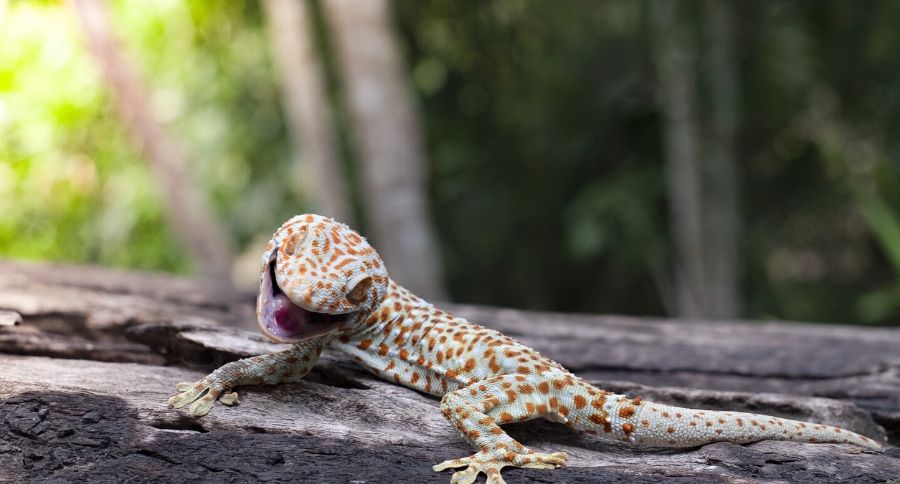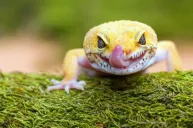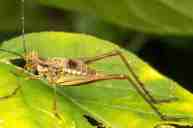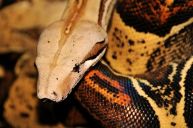Heavy-bodied and nocturnal, Tokay Geckos have a reputation for being aggressive, hard to handle and these geckos are known to bite!
The Spruce Pets tells us they are the second-largest kind of gecko and are known for their vibrant colors and spots. Typically these geckos are a blue-gray color with bright orange and blue spots.
Experts say they need 'a little invested time' and they can be tamed. So they can be good pets. In many homes around the world, Tokays are said to be good luck charms.
What are Tokay Geckos?
https://www.instagram.com/p/B5F8buCh9PT/
These geckos are sometimes utilized to control insects. The Smithsonian's National Zoo and Conservation Biology Institute, share that they have thick, cylindrical bodies, with heads set apart from their necks.
"Their limbs are well-defined and powerful, and their bodies are covered in spots. Geckos are known for their incredible grip and ability to "stick" to surfaces. The grip force of a tokay gecko is especially impressive and can support about 450 pounds."
How big are they?
They are one of the largest geckos alive today. Males range from about 13-16 inches and females about 8-12 inches. They live to be about 10-years-old.
How do you care for a Tokay Gecko?
https://www.instagram.com/p/B0hxLOBHfNl/
Reptile Magazine recommends short, positive sessions with the lizard where it sits on your hand without you restraining or hurting it. They also have handling tips and tricks.
- They eat invertebrates, including moths, locusts, grasshoppers, beetles, cockroaches, termites, crickets, mosquitos, and spiders.
- They may also eat small rats, mice, and snakes.
- Tokay geckos are solitary, nocturnal hunters and are more likely to sit and wait for prey than to actively forage, though they do maintain a foraging area.
What about housing?
https://www.instagram.com/p/B2yRkd2hvWi/
The Spruce Pets provides a full overview of housing for these geckos:
- A 20-gallon tank is a minimum size recommended.
- Provide sturdy branches for climbing, and add strong potted plants if desired (artificial plants could also be used).
- Also provide some hiding spots using cork bark, half logs, or caves. Your gecko should spend almost all its time climbing.
- Be sure your tank has a secure lid.
Also, provide a small water dish. The temperature should be 80 to 90 F during the day (as a gradient) and down to 70 to 80 F at night. No UVB-emitting bulbs are necessary since they are a nocturnal species.
Learn more about humidity requirements here.
Remember to talk to a reptile expert about the species of gecko you are bringing home!
Mealworms and waxworms are what will make these 'large' geckos happy! They actually live a fairly long time with a life span of 10-years-old in captivity. Tokay Gecko care isn't easy! Try orchid bark as the substrate in their housing as many experts recommend this as the best choice.
What about their native habitat?
This species occurs in northeast India, Bhutan, Nepal, and Bangladesh, throughout Southeast Asia, including the Philippines and Indonesia, and to western New Guinea in Melanesia. Its native habitat is rainforest, where it lives on trees and cliffs, and it also frequently adapts to rural human habitations, roaming walls and ceilings at night in search of insect prey.
It is established in Florida in the United States, Martinique, the islands of Belize, and possibly Hawaii.
Other gecko species include the Leopard Gecko.
Do you live with a gecko? What essentials did we miss? Please leave us a comment below!
WATCH NOW: Bearded Dragons Are Awesome Reptiles!




